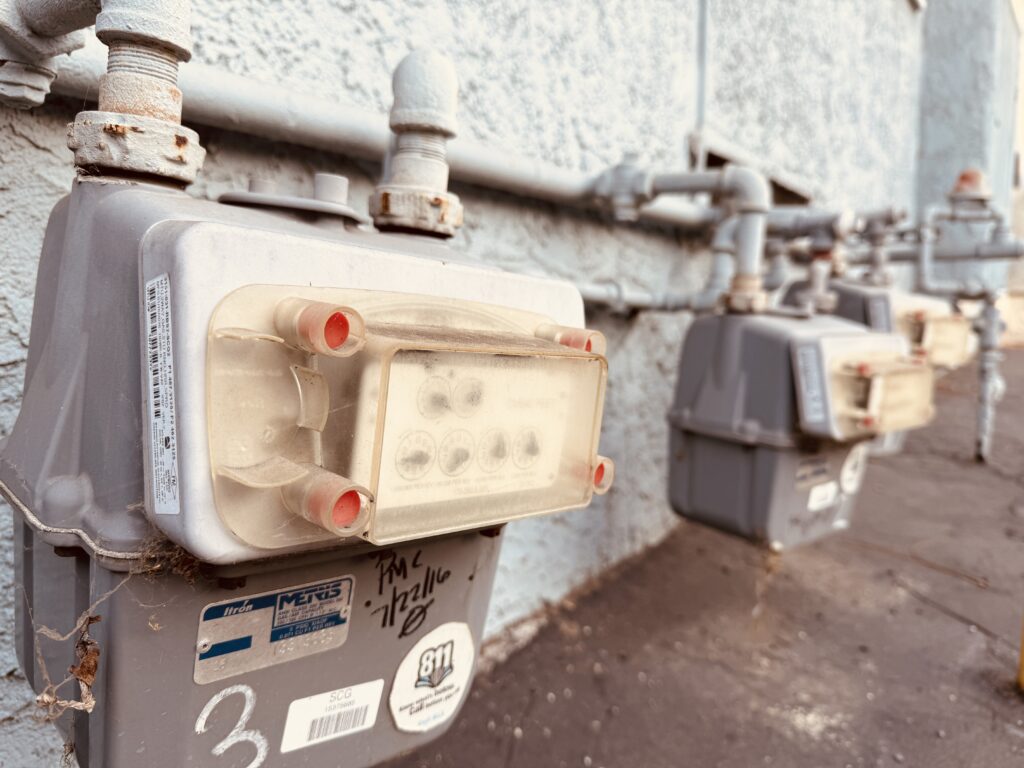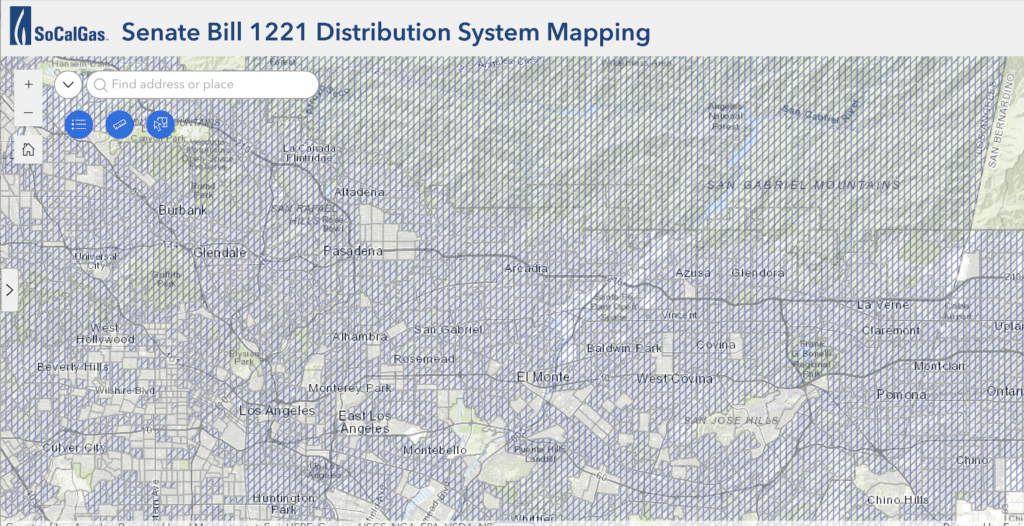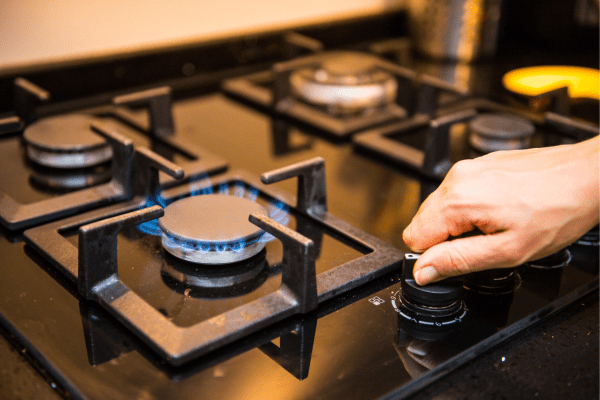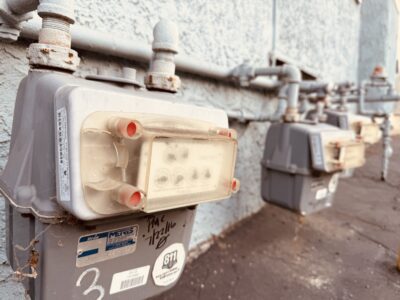Gas Utilities Can Do Better on Neighborhood Electrification
The state’s largest gas utilities are trying to delay priority zones for decarbonization and to block public access to important data. The CPUC should push them to do more.

Last fall, I wrote about the promise of SB 1221, a law that created a pathway for the California Public Utilities Commission (CPUC) to approve pilot projects that will support priority “neighborhood decarbonization zones” to transition away from building gas service toward zero-emissions alternatives, including electrification and thermal energy networks. Now, the gas utilities have submitted their initial system maps and priority neighborhood proposals for CPUC review, and these submissions are largely coming up short.
There are two main areas where the utility proposals are lacking: First, all three of the state’s largest gas utilities fail to propose specific priority neighborhood decarbonization zones, instead proposing that the CPUC designate all regions of the state with foreseeable gas projects as priority zones. This approach is inconsistent with the letter of the statute and would unnecessarily and inappropriately delay progress on neighborhood-scale decarbonization. Second, the utilities are hindering meaningful engagement with municipalities and community groups by requesting that the CPUC keep the vast majority of the data in their network maps confidential to parties who have signed a non-disclosure agreement.
Instead of proposing an initial list of priority decarbonization zones, as ordered by the CPUC and envisioned by the statute, the state’s three largest gas utilities (Southern California Gas (SCG), Pacific Gas & Electric (PG&E), and San Diego Gas & Electric (SDG&E)) have proposed that the Commission delay selecting any particular neighborhoods as priorities, and instead designate every location with a potential gas pipeline project as a priority zone.

If adopted by the CPUC, this “everything is a priority” approach would hinder effective implementation of SB 1221’s decarbonization pilot projects by delaying engagement with community groups, local governments, and homeowners in priority neighborhoods, who will be essential partners in the decarbonization pilots. Indeed, when everything is a priority (neighborhood decarbonization zone), nothing is a priority.
While the gas utilities assert that designating priority zones would be premature because it could exclude good project candidates, SB 1221 (§ 662(d)) provides that priority neighborhood decarbonization zones can be updated as necessary after their initial designation. If additional candidates come to light at a later time, the utilities can work with the CPUC to expand the initial list. Note that one of the smaller gas utilities in the state—Southwest Gas—did identify several potential priority neighborhood decarbonization zones based upon the SB 1221 selection criteria, showing it is, indeed, possible for gas utilities to propose priority zones at this time.
The utilities need not select the full list of all priority zones now, but by failing to highlight any potential priority zones, the utilities are losing out on valuable time to engage with community partners in designing and implementing potential projects.
Not only are the utilities delaying proposing priority zones, they are also working to block public access to the data that is necessary for communities to determine if their neighborhoods would be good candidates. Specifically, SCG, PG&E, and SDG&E have petitioned the CPUC to prevent public access to any gas system data at a more granular level than census tract or zip code.
 Determining whether a neighborhood is a good candidate for cost-effective gas system decommissioning is highly dependent on the specific geographic layout of the gas pipeline network. Neighborhoods that are located further from the center of the gas distribution network on segments with lower customer density are likely to be more cost-effective to electrify than segments closer to the center of the network with higher customer density. Zip-code-level data will not provide the level of detail needed to understand which neighborhoods are likely to be more cost-effective candidates for gas system decommissioning.
Determining whether a neighborhood is a good candidate for cost-effective gas system decommissioning is highly dependent on the specific geographic layout of the gas pipeline network. Neighborhoods that are located further from the center of the gas distribution network on segments with lower customer density are likely to be more cost-effective to electrify than segments closer to the center of the network with higher customer density. Zip-code-level data will not provide the level of detail needed to understand which neighborhoods are likely to be more cost-effective candidates for gas system decommissioning.
Requiring interested communities to become parties to the CPUC gas planning proceeding and sign a non-disclosure agreement in order to review maps with the level of granularity needed to determine if they may be good candidates would prevent meaningful public engagement in the SB 1221 process.
While the gas utilities assert that there are security and privacy risks of disclosing this information publicly, their arguments are overblown and outweighed by the benefits of this information being made publicly available. As consumer advocates pointed out in comments, security risks are likely to be much smaller for the distribution-level gas network at issue here, as compared to the transmission-level gas network, for which data is already available publicly. Indeed, there are safety risks from this information not being made readily available, such as the risk of undetected gas leaks or damage to pipes from construction or natural disasters.
Hopefully this serves as a wake-up call. The CPUC will be holding public forums on the Neighborhood Decarbonization Zones today (Thursday, August 7) at 2 pm and 6 pm. The Commission will then have until January 1, 2026 to designate the priority neighborhood decarbonization zones, following the criteria in SB 1221. The CPUC should push the utilities to go deeper in recommending priority zones, and to disclose more granular gas network data in the maps, in order to support meaningful community engagement in the process and effective pilot outcomes.







Reader Comments